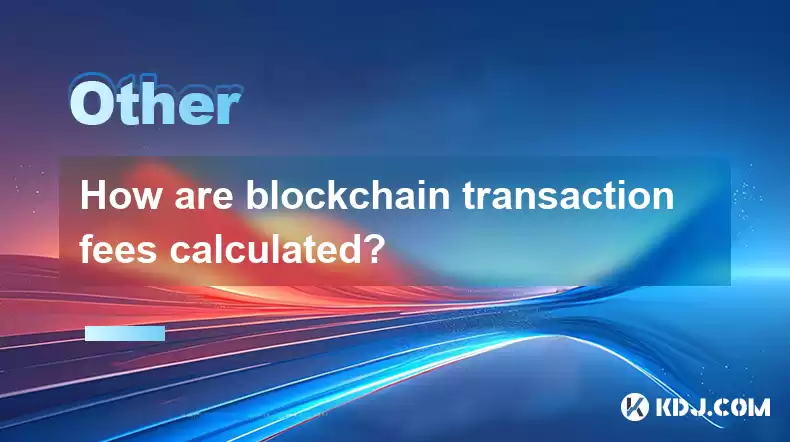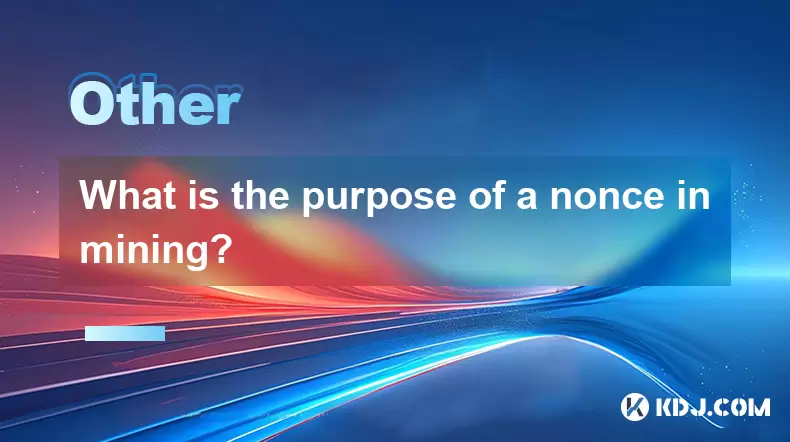-
 Bitcoin
Bitcoin $114400
0.68% -
 Ethereum
Ethereum $3550
2.48% -
 XRP
XRP $3.001
4.99% -
 Tether USDt
Tether USDt $0.9999
0.01% -
 BNB
BNB $757.6
1.46% -
 Solana
Solana $162.9
1.07% -
 USDC
USDC $0.9998
0.00% -
 TRON
TRON $0.3294
0.91% -
 Dogecoin
Dogecoin $0.2015
2.46% -
 Cardano
Cardano $0.7379
2.01% -
 Stellar
Stellar $0.4141
8.83% -
 Hyperliquid
Hyperliquid $37.83
-1.91% -
 Sui
Sui $3.454
0.76% -
 Chainlink
Chainlink $16.62
3.53% -
 Bitcoin Cash
Bitcoin Cash $554.6
2.84% -
 Hedera
Hedera $0.2486
3.91% -
 Ethena USDe
Ethena USDe $1.001
0.00% -
 Avalanche
Avalanche $21.95
3.34% -
 Toncoin
Toncoin $3.563
-2.85% -
 Litecoin
Litecoin $112.7
2.65% -
 UNUS SED LEO
UNUS SED LEO $8.977
0.13% -
 Shiba Inu
Shiba Inu $0.00001232
1.85% -
 Uniswap
Uniswap $9.319
2.93% -
 Polkadot
Polkadot $3.632
1.38% -
 Monero
Monero $307.2
2.36% -
 Dai
Dai $0.9997
-0.03% -
 Bitget Token
Bitget Token $4.340
0.91% -
 Pepe
Pepe $0.00001048
1.07% -
 Cronos
Cronos $0.1348
3.26% -
 Aave
Aave $261.5
1.93%
How are blockchain transaction fees calculated?
Considering network congestion levels, transaction size, blockchain protocol, and miner fees helps calculate accurate blockchain transaction fees.
Feb 16, 2025 at 04:54 am

Key Points
Factors Influencing Transaction Fees:
- Network congestion
- Transaction size
- Blockchain protocol
- Miner fees
Steps for Calculating Transaction Fees:
- Check network congestion levels
- Determine transaction size
- Select an appropriate blockchain protocol
- Factor in miner fees
Tips for Minimizing Transaction Fees:
- Avoid transacting during peak hours
- Choose a blockchain with low transaction fees
- Consider using batch transactions
- Use a hardware wallet to sign transactions offline
How are Blockchain Transaction Fees Calculated?
Blockchain transaction fees are used to incentivize miners to process and verify transactions on a blockchain network. The calculation of transaction fees involves considering various factors:
Factors Influencing Transaction Fees
1. Network Congestion:
Network congestion occurs when a large volume of transactions is simultaneously being processed on the blockchain. This increased demand for block space drives up transaction fees as users compete to have their transactions processed faster.
2. Transaction Size:
Transaction size, measured in bytes, influences transaction fees. Larger transactions require more computational resources to process, resulting in higher fees. Transactions involving complex operations, such as smart contract interactions, typically incur higher fees than simple transfers.
3. Blockchain Protocol:
The blockchain protocol dictates the underlying fee structure and mechanisms for transaction processing. Different protocols have varying fee models, with some implementing dynamic fee structures based on network conditions.
4. Miner Fees:
Miners, the individuals or entities responsible for validating transactions, set the miner fees. These fees compensate miners for their computing power and time spent securing the blockchain. Miner fees vary widely depending on factors such as their hardware setup, electricity costs, and market demand.
Steps for Calculating Transaction Fees
1. Check Network Congestion Levels:
Monitor real-time blockchain data to assess network congestion levels. Gas trackers for Ethereum or block explorers for other blockchains provide insights into current congestion. Consider transacting during off-peak hours to minimize fees.
2. Determine Transaction Size:
Estimate the size of the transaction by calculating the number of bytes it will occupy on the blockchain. Larger transactions, such as those involving large amounts of data or multiple smart contract interactions, will incur higher fees.
3. Select an Appropriate Blockchain Protocol:
Choose a blockchain protocol that aligns with the transaction's requirements and fee structure. For example, Ethereum's gas fee model might be suitable for complex transactions, while Bitcoin's fee structure may be more appropriate for simple transfers.
4. Factor in Miner Fees:
Incorporate miner fees into the transaction fee calculation. Miner fees vary dynamically and can be estimated using fee calculators or gas price oracles. Adjust the transaction fee accordingly to ensure timely processing.
Tips for Minimizing Transaction Fees
1. Avoid Transacting During Peak Hours:
Network congestion during peak hours significantly increases transaction fees. Consider scheduling transactions for less congested times, such as early mornings or late evenings, to minimize fees.
2. Choose a Blockchain with Low Transaction Fees:
Explore alternative blockchains with lower transaction fees. Networks like Avalanche, Polygon, and Solana are known for their fast and low-cost transactions, making them suitable for smaller transactions or applications where cost is a primary concern.
3. Consider Using Batch Transactions:
Combine multiple transactions into a single batch to reduce the overall transaction fee. This method is particularly useful for high-volume traders or applications that generate a large number of small transactions.
4. Use a Hardware Wallet to Sign Transactions Offline:
Hardware wallets allow users to sign transactions offline, eliminating the need for online connectivity during transaction signing. This reduces the risk of malicious actors capturing user credentials and initiating unauthorized high-fee transactions.
FAQs
Q: What is the purpose of transaction fees on blockchains?
A: Transaction fees incentivize miners to process and validate transactions, ensuring the security and reliability of the blockchain network.
Q: Why do transaction fees vary widely on different blockchains?
A: Blockchains have different fee structures and mechanisms, depending on their underlying protocol, network congestion levels, and miner fees.
Q: How can I estimate transaction fees before initiating a transaction?
A: Use real-time network data and fee calculators to assess current network congestion and estimate transaction fees based on factors like transaction size and blockchain protocol.
Q: Is it possible to avoid transaction fees on blockchains?
A: Zero-fee or low-fee transactions are generally not viable on decentralized blockchain networks due to the need for miners to be compensated for their services.
Q: What are the implications of not paying sufficient transaction fees?
A: Transactions with insufficient fees may experience significant delays or even fail to process. Higher fees generally ensure a faster processing time.
Disclaimer:info@kdj.com
The information provided is not trading advice. kdj.com does not assume any responsibility for any investments made based on the information provided in this article. Cryptocurrencies are highly volatile and it is highly recommended that you invest with caution after thorough research!
If you believe that the content used on this website infringes your copyright, please contact us immediately (info@kdj.com) and we will delete it promptly.
- Cryptocurrency, Altcoins, and Profit Potential: Navigating the Wild West
- 2025-08-04 14:50:11
- Blue Gold & Crypto: Investing Disruption in Precious Metals
- 2025-08-04 14:30:11
- Japan, Metaplanet, and Bitcoin Acquisition: A New Era of Corporate Treasury?
- 2025-08-04 14:30:11
- Coinbase's Buy Rating & Bitcoin's Bold Future: A Canaccord Genuity Perspective
- 2025-08-04 14:50:11
- Coinbase's Buy Rating Maintained by Rosenblatt Securities: A Deep Dive
- 2025-08-04 14:55:11
- Cryptos, Strategic Choices, High Returns: Navigating the Meme Coin Mania
- 2025-08-04 14:55:11
Related knowledge

What is the purpose of a nonce in mining?
Aug 04,2025 at 05:56pm
Understanding the Role of a Nonce in Cryptocurrency MiningIn the world of cryptocurrency mining, the term nonce stands for 'number used only once.' Th...

What is the difference between on-chain and off-chain transactions?
Aug 02,2025 at 04:22pm
Understanding On-Chain TransactionsOn-chain transactions refer to digital asset transfers that are recorded directly on a blockchain ledger. These tra...

How are blocks linked together?
Aug 04,2025 at 06:56am
Understanding the Structure of a BlockchainA blockchain is a decentralized digital ledger composed of a sequence of blocks, each containing a list of ...

What is a node's role in a blockchain network?
Aug 03,2025 at 03:16pm
Understanding the Function of a Node in a Blockchain NetworkA node is a fundamental component of any blockchain network, acting as a participant that ...

How are transactions verified on a blockchain?
Aug 04,2025 at 12:35am
Understanding the Role of Nodes in Transaction VerificationIn a blockchain network, nodes are fundamental components responsible for maintaining the i...

What is the double-spending problem and how does blockchain prevent it?
Aug 02,2025 at 01:07pm
Understanding the Double-Spending ProblemThe double-spending problem is a fundamental challenge in digital currency systems where the same digital tok...

What is the purpose of a nonce in mining?
Aug 04,2025 at 05:56pm
Understanding the Role of a Nonce in Cryptocurrency MiningIn the world of cryptocurrency mining, the term nonce stands for 'number used only once.' Th...

What is the difference between on-chain and off-chain transactions?
Aug 02,2025 at 04:22pm
Understanding On-Chain TransactionsOn-chain transactions refer to digital asset transfers that are recorded directly on a blockchain ledger. These tra...

How are blocks linked together?
Aug 04,2025 at 06:56am
Understanding the Structure of a BlockchainA blockchain is a decentralized digital ledger composed of a sequence of blocks, each containing a list of ...

What is a node's role in a blockchain network?
Aug 03,2025 at 03:16pm
Understanding the Function of a Node in a Blockchain NetworkA node is a fundamental component of any blockchain network, acting as a participant that ...

How are transactions verified on a blockchain?
Aug 04,2025 at 12:35am
Understanding the Role of Nodes in Transaction VerificationIn a blockchain network, nodes are fundamental components responsible for maintaining the i...

What is the double-spending problem and how does blockchain prevent it?
Aug 02,2025 at 01:07pm
Understanding the Double-Spending ProblemThe double-spending problem is a fundamental challenge in digital currency systems where the same digital tok...
See all articles

























































































